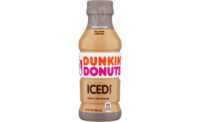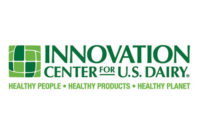Ask 100 people why they go to a tradeshow and you can get 100 different answers, among them: to find new equipment, to find new ingredients, to find new vendors, to network, to chair committee meetings, to get educated on the latest trends.
The International Dairy Show ran in Atlanta last month. I was there to look for articles, sources, ideas and to further my education on product formulation, processing techniques and current research. The International Dairy Foods Association, Washington, D.C., put on the three-day event. Here’s a (very) brief overview of what I picked up:
MilkPEP CEO Vivien Godfrey said her organization will undertake fewer but bolder campaigns in 2012. The No. 1 priority is the Breakfast at Home program. She charged processors to “defend breakfast” by making sure consumers have a bottle of milk on the kitchen table in the morning.
MilkPEP’s second campaign is positioning chocolate milk as a recovery beverage. Godfrey told me that the target audience is the active 18- to 24-year-old engaged in strenuous sports, like marathons, triathlons and serious body-building. MilkPEP, Washington, D.C., sees some of these athletes as fitness proselytizers who will tell their friends about refueling with the beverage.
Be careful (very careful) about on-pack claims. Shoppers have specific notions about what it means for a product to be natural, real, fresh and simple. They are seemingly not fazed by naturally occurring fats, added Vitamin D and sodium. But use the wrong packaging or messaging, and all bets are off. Shoppers rejected a spreadable butter because its package resembled one used for margarines.
Heather Collins of Touchpoint Consumer Insights, Evanston, Ill., and Rachel Kyllo of Kemps, LLC, St. Paul, Minn., presented the results of focus groups in Chicago and Denver in which young adults, mothers and baby boomer women sorted a variety of dairy and non-dairy foods from “least to most” real. They highly rated whole white milk, organic 2% milk, natural cheese and Greek yogurt as “real.” Canned whipped cream, processed cheese, jarred cheeses and Parmesan cheese in a shaker were least “real.” Brick cheese in a plastic wrapper is considered less real that an irregularly sliced chunk of cheese in a deli-style wrapper.
Milk processors lag in product innovations. Gary Hemphill of Beverage Marketing Corp., New York, said there is more innovation in soft drinks and fruit beverages than there is in milk-based beverages. Single-serve beverages created for immediate consumption hold promise for dairy processors. Such beverages are less price-sensitive than beverages intended to be taken home and consumed there. Convenience stores are a natural channel for single-serve, drink-right-now beverages. I sipped a variety of flavored milks in aluminum bottles from the Upstate Niagara Co-operative at the Dairy and Beverage Bar on the show floor. I liked the strawberry-chocolate flavor.
Schools want to work with you, not fight with you. Jessica Shelly, director of food services for the Cincinnati Public Schools, told me how she worked with Trauth Dairy, Newport, Ky., to reformulate chocolate milk into a version with fewer calories and less sugar. She got out in front of the issue, did some research of her own and was able to neutralize criticisms of the product from a vocal minority of parents.
What did you learn in Atlanta? Send me a note or call me. n
Jim Carper is chief editor of Dairy Foods Phone: 847-405-4009. Email: carperj@dairyfoods.com.
Stay ahead of the curve. Unlock a dose of cutting-edge insights.
Receive our premium content directly to your inbox.
SIGN-UP TODAYCopyright ©2024. All Rights Reserved BNP Media.
Design, CMS, Hosting & Web Development :: ePublishing

